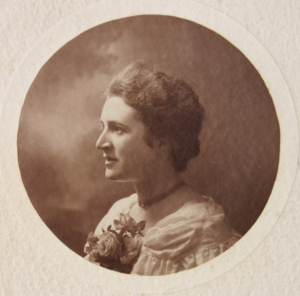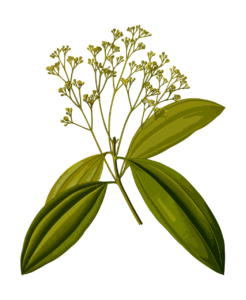Agnes Arber, née Robertson
Botanist
Agnes Robertson, 1905
Reproduced on the website by permission of James and Catharine Robertson
- BORN 23rd February 1879, 26 Regent’s Park Road, London, England
- DIED 22nd March 1960, Hope Nursing Home, Cambridge, England
- WORKED Mostly in Cambridge. She worked occasionally in Ethel Sargant’s laboratory in Reigate, Surrey when she was a student, then for five years in the Balfour Laboratory at Newnham College. When that closed at the beginning of WW1, she set up her own laboratory at home.
- HONOURS First female botanist (and 3rd scientist) to be elected a Fellow of the Royal Society (24th May 1948); Gold medal of London’s Linnean Society (1946); President of the Botany section of the British Association for the Advancement of Science (1921)
Artistic Connections
No record, but most girls of her class were taught piano and singing at that time
Music
Coming soon!
Education
- From 1887: North London Collegiate School, London
- 1897-9: BSc at University College London: first class honours
- Further degree at Newnham College Cambridge completed in 1902: first class honours.
- University College PhD in 1905 (research on gymnosperms in lab of Prof Frances Oliver

Blue plaque erected in 2018 by English Heritage at 9 Elsworthy Terrace, Primrose Hill, London, NW3 3DR, where she once lived (photo by Spudgun67 on wikimedia commons)
Occupations
Researching
Arber met the botanist Ethel Sargant at school, who was a major influence on her life. Arber worked in the ‘Jodrell Junior’ lab at Sargant’s home in Reigate during her holidays from school and university, especially on cotyledons.
Teaching
After her degree, she worked at UCL first as a teaching assistant and then as a lecturer. Women formed nearly 80% of the students who won prizes.
In 1909, she left to get married and moved to Cambridge to work with her husband on paleobotany.
Writing
In 1912, she published her most successful book, Herbals, and continued to write after their daughter Muriel was born.
In 1918, her husband and Sargant both died, but she continued to work at home as a single parent. Unlike many working mothers, she had domestic help, and so could continue dedicating herself to her research.

Image from page 184 of ‘Herbals: their origin and evolution’ (photo by Internet Archive Book Images on Flickr)
Scientific Achievement
Botany was Arber’s passion throughout her life, yet she chose three different ways of approaching it.
- First she studied herbals and their evolution, 1470-1670.

Herbal Medicine – Image by Prawny from Pixabay
- Then she carried out more orthodox research, publishing books on cotyledons, water plants and gramminae (cereals, grasses & bamboo).

Water Lily (Image by Brigitte Werner from Pixabay)
- When she could not obtain laboratory supplies during WW2, she turned to historical and philosophical subjects, and was strongly influenced by Goethe and Eastern mysticism. Her botanical books were very well received, but CUP declined to publish her final book, The Manifold and the One, perhaps because its orientation was too mystical and speculative
Did You Know?
- She worked for several substantial periods with Ethel Sargant in her home laboratory at Reigate, but the local Customs & Excise inspectors were very suspicious, accusing the women of distilling alcohol in their chemical apparatus.
- Although she lost her academic position, she maintained that she preferred working at home, where it was secluded and peaceful. After a male Professor squeezed her out of the laboratory, she turned down the offer of a place in the Botanic Garden. The Principal of Newnham, Pernel Strachey, was very supportive & arranged for her to use her lab equipment in her own home. Arber thanked her for this ‘opportunity of quiet and independent research.’
An Inspiring Woman
Despite her stellar qualifications, like many women of that era Arber was marginalised and deprived of conventional career opportunities.
A single parent after her husband died young, she worked in her own laboratory at home and was linked into female scientific networks.
She displayed great adaptability in the face of adverse circumstances, starting her career by studying ancient herbals, then moving into first-class technical research (plant morphology), and finally producing highly-regarded philosophical and historical analyses.



